Introduction
Kazan Federal University is located in Kazan, a historical city of Russia. It is the third university established in Russia after Moscow State University and St. Petersburg State University. It is also one of the educational, scientific and cultural centers of Russia. It has educated celebrities such as Leo Tolstoy, Maxim Gorky, and Vladimir Lenin.
Overview
Student size: more than 52,000 students, including more than 11,500 international students from 101 countries.
Faculty: about 4,400 academic staff.
History
On November 5, 1804, Tsar Alexander I signed the decree to establish the Kazan Imperial University.
In 1814, the university included four departments: medicine, mathematics and physics, linguistics, and political science and ethics.
From 1827 to 1846, Nikolai Lobachevsky, the founder of non-Euclidean geometry, served as the president of the university.
In 1833, the university observatory was opened.
In 1837 In 1842, the first Chinese teaching and research department in Russia was opened.
In 1842, chemist Nikolay Zinin synthesized anilin for the first time.
In 1844, chemist Karl Claus discovered the new element ruthenium.
In 1885, Vladimir Bekhterev founded the first psychophysiological laboratory in Russia.
In 1887, Vladimir Ulyanov (Lenin) enrolled in the Faculty of Law.
In 1925, Kazan State University was named Lenin.
In 1996, Russian President Yeltsin ordered that Kazan University be included in the protection of precious national cultural heritage of the Russian Federation.
In 2009, Kazan State University was renamed Kazan Federal University and was included in the ten federal universities directly under the Russian Federation.
Founding time
November 5, 1804 Day.
School Strength
Teaching Quality: As one of the oldest universities in Russia, it has high teaching quality, excellent teaching staff, close integration of teaching and scientific research, and has cultivated many talents who have made outstanding contributions in various fields.
Scientific Research Achievements: The school has strong scientific research strength. In recent years, it has established 17 centers of excellence and 80 world-class research and teaching laboratories. It has achieved remarkable results in mathematics, chemistry, medicine, linguistics, geology, geobotany and other disciplines, and has produced many important scientific discoveries and theories, which have promoted the development of related fields.
International Exchange: The school actively carries out international exchanges and cooperation, and has established more than 360 cooperative relations with 69 countries in the world. It is a member of 15 international academic associations and one of the 18 Russian universities selected as "5-100" It is one of the universities in the program, aiming to enhance its international competitiveness in the world's leading research and education centers.
Nature of the institution
Public research university.
Educational philosophy
Focus on the organic combination of teaching and scientific research, emphasize the cultivation of students' innovative and practical abilities, and is committed to providing students with high-quality educational resources and a good learning environment to promote their all-round development. At the same time, it focuses on inheriting and promoting Russia's cultural and scientific traditions, and cultivating professionals with international vision and social responsibility.
Key laboratories and disciplines
Key laboratories: The school has a number of key laboratories, such as the Electron Paramagnetic Resonance Laboratory and the Chemical Structure Theory Research Laboratory, which provide good research conditions for scientific researchers and students.
Key disciplines: Mathematics, chemistry, medicine, linguistics, geology, physics, biology, economics, law, computer science and other disciplines have a high reputation and influence in Russia and internationally, among which the research results of mathematics, chemistry, medicine and other disciplines are in a leading position worldwide.
Department
The school is divided into 15 departments, 7 scientific research centers and 17 departments.
Ranking
2021QS World University Rankings 370th.
2022QS World University Rankings 347th Ranked 601-800 in the Times Higher Education World University Rankings 2021.
Ranked 817 in the U.S. News World University Rankings 2021.
Ranked 901-1000 in the Academic Rankings of World Universities 2020.
Expenses
Tuition fees: Tuition fees vary for different majors. The annual tuition fees for undergraduate majors are about 200,000-300,000 rubles, and the tuition fees for English-taught master's majors are about 300,000-400,000 rubles.
Living expenses: About RMB 2,000-3,000 per month.
Accommodation fees: The school dormitory fee is about RMB 1,500-2,000 per month.
Campus
Teaching facilities: The school's architectural form is a magnificent Greek-style complex, with the charm of a palace in ancient Greek mythology. The campus has a university research and teaching institute, 27 subject laboratories, a botanical garden, two meteorological and astronomical observatories, a scientific library with 5 million books, a chemical science institute, a mechanical and mathematical science institute, 7 museums, an information technology center, etc., providing students with a good learning and research environment.
Dormitory conditions: In 2011, the University Games Village was transferred by the federal government to Kazan Federal University as a student dormitory. The dormitory area has 20 buildings of different heights, sports facilities, grocery stores, etc., which can accommodate more than 9,000 students, including international students from more than 100 countries. It has been rated as one of the most comfortable dormitory campuses in Russia many times.
-

Peter the Great St.Petersburg Polytechnic University
-
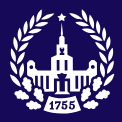
Moscow State University M. V. Lomonosov
-
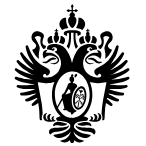
St. Petersburg State University
-
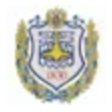
Bauman Moscow State Technical University
-

Tomsk State University
-

Peoples' Friendship University of Russia
-
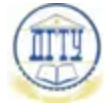
Don State Technical University
-

Moscow Institute of Physics and Technology
-
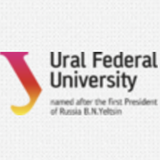
Ural Federal University
-

Kazan Federal University
-

Mesoamerican University
-

Istmo University
-

Mariano Galvez University of Guatemala
-

Regional University of Guatemala
-

Galileo University
-

Francisco Marroquín University
-

Rafael Landívar University
-

University of the Valley of Guatemala
-

University of San Carlos of Guatemala
-

Technological Institute of Tlaxcala Plateau
-

Golfo University
-

Technological University of South Sonora
-

Technological University of Huejotzingo
-

Tizimín Institute of Technology
-

Chilpancingo Institute of Technology
